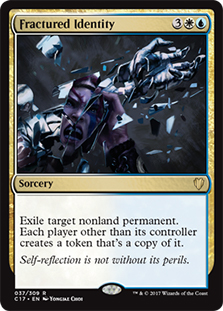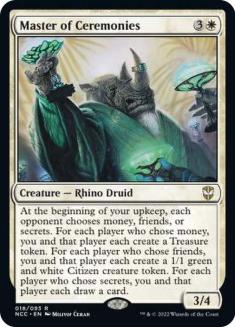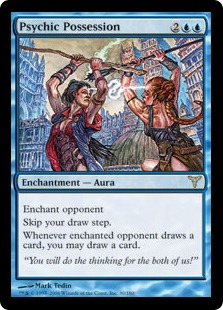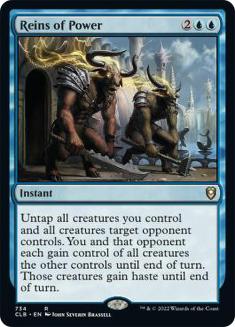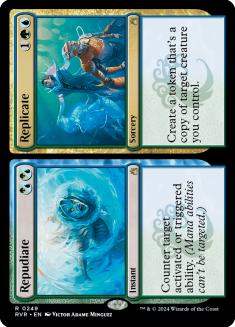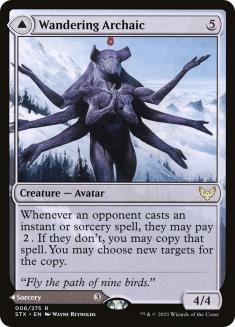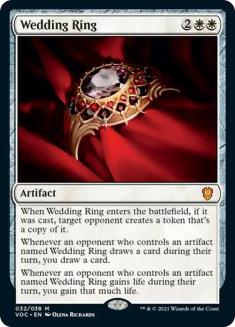After the Legends Elder Dragons, Phelddagrif lays a decent claim to being the format’s first real OG commander—so OG that we called it “general” back then. I had built it as Arcades Sabboth, but since someone else was laying claim to it, I had to look elsewhere. Since the folks I was playing with at the time (we’re talking mid-to-late 2003 here) were relatively casual Magic players, I wanted a general that gave me the colors but wasn’t itself too powerful. The rest is indeed history. My version has been through numerous iterations over these past two decades, currently landing on Purple Hippos and Maro Sorcerers.
Phelddagrif was certainly the format’s first popular Group Hug commander. I get excited when someone builds a cool Purple Hippo deck, especially one outside the box. Enter Commander Advisory Group (CAG) member and saucy deck builder Rachel Weeks, and we have something right in the sweet spot. I’ll show you what she’s put together (and here’s her primer on playing it), then offer both my commentary on it and some experience in playing the deck.
In Her Own Words
Before we get there, here’s what Rachel herself has to say about it:
My Phelddagrif deck started—nearly four years ago—as a budget group hug list that I found online. She was designed to team up with one player by giving them a lot of Hippos, use them to attack the other players, and then steal all the Hippos back once it’s down to one on one. I had never heard of group hug before, and the idea excited me. Phelddagrif herself was silly and strange. I’d never seen another Magic card like her.
Over the years, I played her in other play groups, venturing out to new game stores and eventually moving to Los Angeles. I powered her up, adding Intruder Alarm and Dingus Staff and purchasing an Enlightened Tutor. I found that group hug wasn’t always received enthusiastically, so this particular Phelddagrif deck wandered away from it. Instead, I focused on ramp cards and silly combo lines. Still, no matter how many cards I took out, the tabled assumed I was playing group hug because I was playing Phelddagrif. It was frustrating at first; then I learned to use that to my benefit.
I found I could get all the political sway of playing a group hug deck without actually playing all of the group hug spells, as long as the table wasn’t afraid of me. I started cutting threatening permanents and intimidating spells and replacing them with inferior, but still powerful cards. Rhystic Study, Seedborn Muse, Smothering Tithe all got the axe. They were replaced with sillier or worse cards that don’t attract as much attention: Psychic Possession, Beck // Call, and Wilderness Reclamation.
Then, Ikoria came out and Keruga, the Macrosage was printed. That’s when the deck really locked into place. Keruga changed the deck a great deal. I was forced to cut two win conditions: Mantle of Leadership and Suture Priest. I had to cut Enlightened Tutor and all the two-mana ramp spells, but the core of the deck was still there. And from the outside, Phelddagrif looked even sillier, even more like a joke.
Before I get carried away, I want to be clear. I never told my opponents that Phelddagrif was a group hug deck. This wasn’t about lying to my opponents in pregame conversations. It’s been about letting players’ preconceptions about a Commander get in their own way. There was no sense in disabusing them of anything. I wanted to build a deck that was adorable and lethal, charming and dangerous. Also, I wanted to build a deck that was fun and surprising to lose to.
I would describe Phelddagrif today as a durdly, big-mana deck with a number of infinite combos. It’s always been important to me that my decks don’t win the same way every time, so there are plenty of ways for it to win without going infinite. None of the infinite combos are clearly better or faster than the others. Every game with Phelddagrif is a new puzzle to sort out.
The List
Creatures (16)
- 1 Wood Elves
- 1 Questing Phelddagrif
- 1 Consecrated Sphinx
- 1 Selvala, Explorer Returned
- 1 Crafty Cutpurse
- 1 Lore Weaver
- 1 Ley Weaver
- 1 Springbloom Druid
- 1 Dryad of the Ilysian Grove
- 1 Nyxbloom Ancient
- 1 Wandering Archaic
- 1 Rift Sower
- 1 Solitude
- 1 Foundation Breaker
- 1 Topiary Stomper
- 1 Master of Ceremonies
Lands (25)
- 1 Forbidden Orchard
- 1 Treetop Village
- 1 Ancient Tomb
- 1 Windswept Heath
- 1 Flooded Strand
- 1 Maze of Ith
- 1 Temple Garden
- 1 Breeding Pool
- 1 Hallowed Fountain
- 1 Flagstones of Trokair
- 1 Sunpetal Grove
- 1 Misty Rainforest
- 1 Hinterland Harbor
- 1 Bountiful Promenade
- 1 Sea of Clouds
- 1 Prismatic Vista
- 1 Castle Garenbrig
- 1 Fabled Passage
- 1 Rejuvenating Springs
- 1 Branchloft Pathway
- 1 Barkchannel Pathway
- 1 Yavimaya, Cradle of Growth
- 1 Lair of the Hydra
- 1 Boseiju, Who Endures
- 1 Spara's Headquarters
Spells (58)
- 1 Heartbeat of Spring
- 1 Ghostly Prison
- 5 Forest
- 1 Wrath of God
- 3 Plains
- 1 Propaganda
- 1 Intruder Alarm
- 3 Island
- 1 Dingus Staff
- 1 Mirari's Wake
- 1 Vedalken Orrery
- 1 Insight
- 1 Reins of Power
- 1 Overgrowth
- 1 Defense of the Heart
- 1 Angel's Trumpet
- 1 Skyshroud Claim
- 1 Fact or Fiction
- 1 Chord of Calling
- 1 Psychic Possession
- 1 Search for Tomorrow
- 1 Crib Swap
- 1 Idyllic Tutor
- 1 Mercy Killing
- 1 Wargate
- 1 Leyline of Anticipation
- 1 Command Tower
- 1 Supreme Verdict
- 1 Detention Sphere
- 1 Beck
- 1 Tempt with Discovery
- 1 Dictate of Kruphix
- 1 Ezuri's Predation
- 1 Mystic Confluence
- 1 Arachnogenesis
- 1 Fractured Identity
- 1 Teferi's Protection
- 1 Pir's Whim
- 1 Wilderness Reclamation
- 1 Repudiate
- 1 Sevinne's Reclamation
- 1 Fierce Guardianship
- 1 Bala Ged Recovery
- 1 Saw It Coming
- 1 Doomskar
- 1 Vanquish the Horde
- 1 Wedding Ring
- 1 Touch the Spirit Realm
- 1 Careful Cultivation
- 1 Endless Detour

The Indy Experience
I mentioned playing the deck in my Command Fest Indianapolis Report. It was fun to pilot something so relatively far outside what I normally play. Once or twice I had to ask her about particular lines of play or what the deck might want to do in a situation.
As I noted in that report, when it was down to me and one other player, I had one of the combos available: Intruder Alarm, Mirari’s Wake, Treetop Village, Angel’s Trumpet, and Phelddagrif. I could give the other player an arbitrarily large number of tokens and have Angel’s Trumpet do its work. Unfortunately, the player had Ashnod’s Altar on the battlefield, meaning he could sacrifice all the tokens before they killed him. That means I was definitely missing that Suture Priest. The good news is that I eventually realized that Nyxbloom Ancient’s five power and Treetop Village’s three added up to the eight I need to kill my opponent.
Single-Card Standouts
In her write-up and primer, Rachel already focused on the combo lines and synergistic cards. I’d like to go over a few of the individual cards in the deck that either I find some joy in playing or are clever choices on her behalf.
I’ll never see this card without remembering the time that Rachel’s fellow CAG member Ellie Rice came onto the RC stream, and used Fractured Identity to give all three of us copies of Forced Fruition. It was one of the most weirdly pleasurable ways I’ve ever died in a Commander game. The general idea with the card is to get rid of an opponents’ permanent instead of your own, while giving copies to your two new BFFs. What’s good about Fractured Identity is that it scales to the power level of the game in progress. It’s a little spendy, but it really is the kind of card that makes wild memories.
This is one where the advantage is going to build over time. It can be a political tool, as two of the other players might be encouraged to give us cards so that we have the chance to deal with the last player. If not, Treasures or 1/1s aren’t the worst things. They might not be much given a single upkeep, but getting more and more stuff for free over time is good beats.
I play something like Insight in one of my decks, Hibernation. The idea is to let the green player ramp and invest deeply into their battlefield, then bounce it all back. Of course, the problem is that it’ll eventually return to the battlefield. With Insight, which might be the superior card in many cases, there will be boatloads of card drawing. When was the last time you saw a table without at least two green players? Cast Insight, which will barely cost you a dollar, and enjoy your full grip.
I was skeptical when I played the card. Then I realized that someone else would be doing all the work of drawing cards for me. Commander players aren’t going to stop drawing cards because we get the same amount, too. They spend the mana, we get some cards. It’s a zero-risk scenario since the enchantment will fall off if the player happens to get knocked out of the game, giving us back our own draw step (but unfortunately returning us to the plebeian land of drawing only one card per turn).
Reins of Power is an absolute memory-maker. I had already been playing the card since it came out in Stronghold, so I was happy seeing it reprinted in Commander 2011, 2015, and 2016. Whether we’re using it to borrow someone’s creatures to go on the offensive (perhaps against them!) or getting a better team to block with, we can perform all kinds of tricks with it. I’ve certainly used it as an emergency Fog, since creatures are removed from combat when they change controllers. Here in Rachel’s deck, she can use it after she’s first given someone a zillion Hippos to swing at everyone for highly lethal damage. Reins of Power wants to play with the battlefield state in order to maximize value, and I’m here for it. Probably one of my Top 10 cards ever.
Whichever side of the card we want to play, there is something to be had with both Repudiate and Replicate. There are loads of triggered abilities worth countering—like on Craterhoof Behemoth and Massacre Wurm (the big one that gives -2/-2 being the relevant one). We can also dagger someone on an activated ability, like Maze of Ith. In Rachel’s deck, there isn’t that much to copy, but a second Nyxbloom Ancient, Consecrated Sphinx, or even Wandering Archaic will provide an explosion of value.
When mana curves are tighter, Wandering Archaic gets better. Someone might take a Genesis Wave for two less in order to deny us something, but they’re usually not able to do so with the Cultivate and friends. They may choose to not pay the two for political reasons on a Swords to Plowshares, letting us help deal with a common enemy. I still haven’t seen anyone cast the back side, Explore the Vastlands. Why would they, unless those three points of life were really important, or they were desperately looking for an instant or sorcery to get them out of a tight spot? I must resist the urge to blindly jam Wandering Archaic into every deck.
More card draw (plus lifegain) sharing. I’m happy that we haven’t seen a spate of people doing really awkward things during in-person games with Wedding Ring. Once again, getting stuff for free will keep you ready to actually spend mana to cast other stuff. The “during their turn” part is a little awkward, but it keeps the card from being kind busted.
Final Thoughts
Rachel’s deck sits in a sweet spot in the middle of the format. It can do a big, sometimes infinite, thing, but it doesn’t rush to get there. While it might be conceivable that the deck could get a god hand and go off on Turn 5 or 6, it’s more likely to edge in on double-digit turns for the win. When you have that, and it’s a fun ride, you have the kind of deck that only Commander can create.
As always, we have a channel on the Commander RC Discord server dedicated to discussing my articles. I’d love to hear about features that you’d like to see, material you want more coverage on, or even things that you think just aren’t working. I’m all ears. Join more than 7,000 friends for discussion of not just this piece, but on a wide variety of topics—both Commander-related and not. Hope to see you there!
Visit my Decklist Database to see my Signature Decks, the Chromatic Project, and more!


